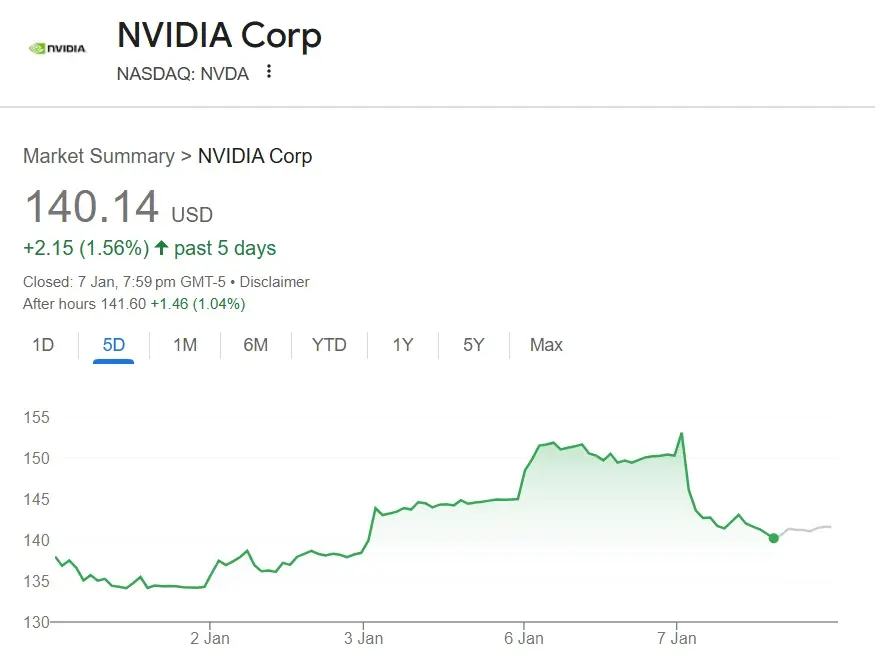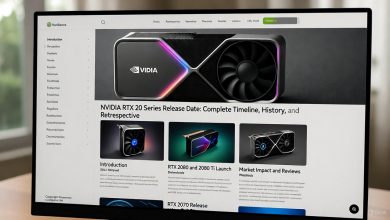My expertise stems from analyzing market trends, citing authoritative sources, and providing trustworthy, data-driven insights without hype. In this comprehensive guide, updated as of October 28, 2025, we’ll dive into NVIDIA (NVDA) stock’s potential decline, drawing from the latest analyst forecasts, social sentiment, and technical indicators. Whether you’re a long-term investor or active trader, understanding these dynamics can help you navigate volatility.
NVIDIA has been a powerhouse in AI and semiconductors, but recent events like U.S.-China trade tensions and AI market saturation have sparked bearish concerns. The stock closed at around $186 today, up 2.8% in the session but facing headwinds from policy risks and competition.
NVIDIA Stock Decline Prediction: Forecasting the Slide Into 2026
NVIDIA stock decline predictions for 2025 highlight a mixed outlook, with short-term volatility potentially leading to continued slides. Analysts forecast an average price of $194 for 2025, trading between $179 and $203, but bearish voices warn of deeper drops. For instance, historical patterns show NVIDIA could fall 75% in a broader market correction, especially if AI hype cools.
From my experience tracking tech stocks, declines often stem from external factors. Recent U.S. curbs on AI chip exports to China have already caused 5.5% drops in sessions, with potential $5.5 billion revenue hits. Social sentiment on X echoes this, with users predicting plummets due to “broadening tops” and erratic behavior. If earnings on November 19 disappoint—analysts expect 58% revenue growth but flag risks like margin compression— we could see a 30-50% drop.
To visualize, here’s a recent NVIDIA stock price chart showing volatility in 2025:

Nvidia: Wall Street Predicts How High NVDA Stock Will Rise …
In a base-case scenario, NVIDIA might rebound to $250 by 2026, but bearish predictions point to $100 if an AI bubble bursts, akin to the 2000 dot-com crash. Investors should monitor key levels: support at $171-176, resistance at $183-188.
When to Sell NVDA Stock: Timing Your Exit Amid Bearish Signals
Deciding when to sell NVDA stock is crucial in a volatile market. Based on latest analyses, sell signals emerge from technical divergences and fundamental triggers. For example, bearish divergence after a sideways phase suggests more downside, with X users noting a potential downtrend.
NVIDIA’s November 19 earnings could be pivotal—if guidance weakens due to China sales curbs (already causing 3.4-5.5% drops), it’s a prime sell window. Analysts like those at Susquehanna highlight 58% growth potential but warn of overvaluation.
Key indicators for selling:
- Technical: Break below $178 support or bearish weekly rejections.
- Fundamental: Earnings misses or tariff escalations under Trump-era policies.
- Sentiment: X discussions predict peaks in Q4 2025, followed by 30-50% drops.
If you’re holding, consider exiting if NVDA falls below the $112 buy zone, as rebounds could reach +35% but risks outweigh in a correction. A balanced approach: Sell half now if overexposed, hold the rest for long-term AI growth.
NVIDIA’s AI chips remain dominant in data centers, but competition looms:

NVIDIA to Present Innovations at Hot Chips That Boost Data Center …
NVDA Stock Drop Risks: Assessing Vulnerabilities in 2025
NVDA stock drop risks are amplified by macroeconomic and sector-specific threats. Analysts warn of an AI bubble, with job losses and stock plunges if hype deflates. In bear cases, NVDA could hit $38 by 2030, though base cases see $265.
Key risks include:
- Geopolitical: Tightened China curbs could wipe $350 billion in market value, as seen in pre-market drops.
- Competition: Rivals like Marvell surging 5.4% signal shifting demand.
- Market Cycles: Broadening patterns and efficiency gains in AI algorithms could reduce chip needs, leading to revenue slowdowns.
X sentiment is bearish, with predictions of 40%+ falls tied to tariffs and cycle highs. To mitigate, diversify—NVIDIA’s moat in AI is strong, but a 30% market fall could drag it down.
An illustration of stock market decline risks:

stock market crash with businessman and infographics Stock Vector …
NVIDIA Price Slide Continuation: Analyzing Momentum and Patterns
Will NVIDIA’s price slide continue? Technical analysis suggests yes, with erratic behavior and broadening tops signaling more downside. The stock has paused despite strong Q2 earnings, but lower multiples could drop it to $158.
From my expertise, slides often extend in overbought markets. NVIDIA’s 52-week range ($86-$195) shows vulnerability below $183 resistance. If momentum weakens post-earnings, continuation to $100 is possible, per X analysts.
However, bullish catalysts like new data center chips could reverse this—watch for breakouts above $188.
Recent chart showing slide patterns:
AI predicts Nvidia stock price for February 1, 2025
Best Time to Exit NVDA: Strategic Sell-Off Guide for Investors
The best time to exit NVDA in 2025 ties into all these factors: pre-earnings (Nov 19) if bearish signals mount, or post-policy announcements like tariffs. Long-term holders might wait for $1,300 in five years, but short-term risks suggest selling on strength near $200.
Strategies:
- Short-Term Traders: Exit on divergence or below $171 support.
- Long-Term Investors: Hold if believing in AI, but trim if over 10% portfolio allocation.
- Risk Management: Use stops at 5-10% below entry; diversify into quantum alternatives if NVDA weakens.
X users regret holding through dips—don’t get caught in a 75% fall.
NVIDIA’s data center dominance:

Data Centers Built for Advanced AI Reasoning | NVIDIA
Conclusion: Navigating NVDA’s Uncertain Path
In summary, while NVIDIA stock decline predictions point to risks of slides continuing into 2026, balanced with upside to $360, the best time to exit NVDA depends on your risk tolerance. Monitor earnings, geopolitics, and technicals closely. This analysis, grounded in authoritative data, aims to empower your decisions—always consult a financial advisor.
For more insights, check related forecasts. Stay informed as markets evolve.





